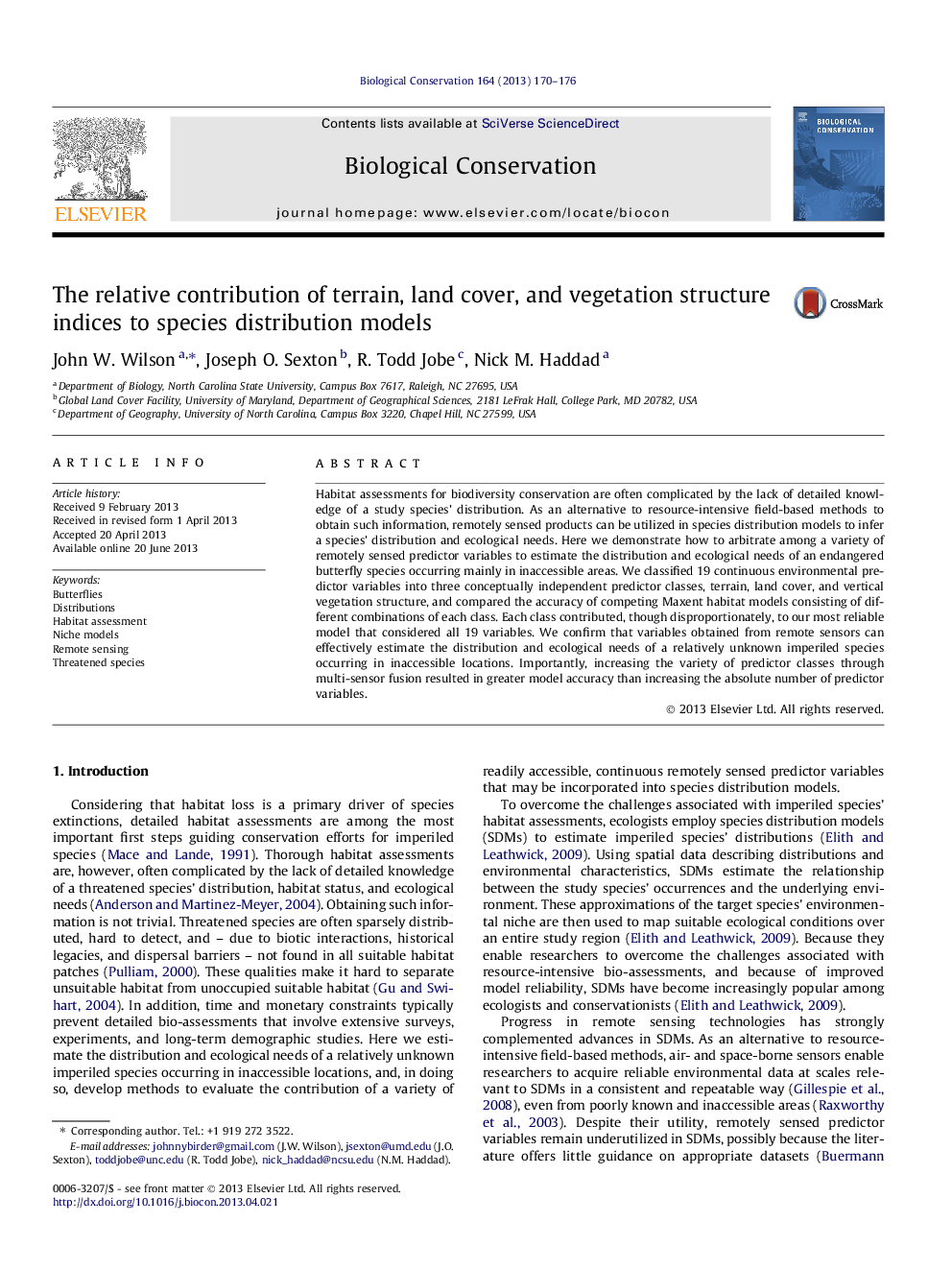| کد مقاله | کد نشریه | سال انتشار | مقاله انگلیسی | نسخه تمام متن |
|---|---|---|---|---|
| 6300566 | 1617937 | 2013 | 7 صفحه PDF | دانلود رایگان |
عنوان انگلیسی مقاله ISI
The relative contribution of terrain, land cover, and vegetation structure indices to species distribution models
ترجمه فارسی عنوان
سهم نسبی زمین، پوشش زمین و شاخص های ساختاری گیاهی به مدل های توزیع گونه
دانلود مقاله + سفارش ترجمه
دانلود مقاله ISI انگلیسی
رایگان برای ایرانیان
کلمات کلیدی
پروانه ها، توزیع، ارزیابی محیط زیست، مدل های کابینت، سنجش از دور، گونه های خطرناک،
موضوعات مرتبط
علوم زیستی و بیوفناوری
علوم کشاورزی و بیولوژیک
بوم شناسی، تکامل، رفتار و سامانه شناسی
چکیده انگلیسی
Habitat assessments for biodiversity conservation are often complicated by the lack of detailed knowledge of a study species' distribution. As an alternative to resource-intensive field-based methods to obtain such information, remotely sensed products can be utilized in species distribution models to infer a species' distribution and ecological needs. Here we demonstrate how to arbitrate among a variety of remotely sensed predictor variables to estimate the distribution and ecological needs of an endangered butterfly species occurring mainly in inaccessible areas. We classified 19 continuous environmental predictor variables into three conceptually independent predictor classes, terrain, land cover, and vertical vegetation structure, and compared the accuracy of competing Maxent habitat models consisting of different combinations of each class. Each class contributed, though disproportionately, to our most reliable model that considered all 19 variables. We confirm that variables obtained from remote sensors can effectively estimate the distribution and ecological needs of a relatively unknown imperiled species occurring in inaccessible locations. Importantly, increasing the variety of predictor classes through multi-sensor fusion resulted in greater model accuracy than increasing the absolute number of predictor variables.
ناشر
Database: Elsevier - ScienceDirect (ساینس دایرکت)
Journal: Biological Conservation - Volume 164, August 2013, Pages 170-176
Journal: Biological Conservation - Volume 164, August 2013, Pages 170-176
نویسندگان
John W. Wilson, Joseph O. Sexton, R. Todd Jobe, Nick M. Haddad,
